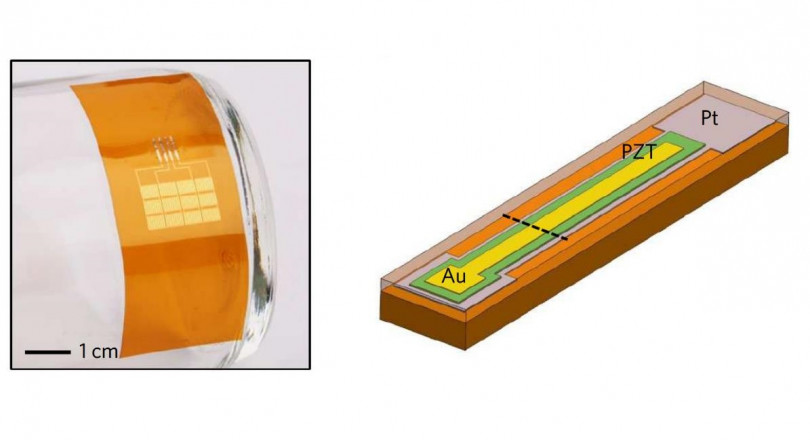
MIT engineers have collaborated with doctors to construct a small, flexible sensor which is swallowed to measure gastrointestinal movements. The data is transmitted remotely, allowing doctors to identify certain gastrointestinal diseases.
Currently still in the prototype stage, the small sensor measures 2 x 2.5 cm and comprises a piece of piezoelectric material (PZT) with electrodes on its top and bottom. The PZT generates an electric current when it becomes deformed, and the strength of the current depends on the degree of deformation.
The researchers rolled up this flexible sensor and fitted it in a capsule. In future, human patients would swallow a similar capsule, but in this trial using the prototype, the researchers employed a pig. The capsule soon dissolved in the pig’s gastric juices, after which the sensor nestled itself in the tissue of the animal’s abdominal wall.
Abdominal wall
In this trial, thin cables were inserted to transmit data outside the body, but this will take place remotely in the future. The cables relayed the strength of current generated by the sensor at any given time. This allowed the researchers to calculate the mobility of the abdominal wall, but also to register when the animal ingested food or drink.
The sensor remained in the pig's guts for 48 hours in this trial. ‘For the first time, we've proven that a flexible piezoelectric sensor can remain in the stomach without any significant deterioration either mechanically or electrically speaking’, said assistant professor Canan Dagdeviren of MIT in a press release.
Monitoring patients
This is good news, as the research team has plans to develop a sensor for human use. Doctors will then be able to monitor patients with complaints for a number of days, and hopefully discover what is wrong with them. If the stomach or intestines do not move as they should, this can be indicative of diseases such as gastroparesis, as a result of which the stomach does not empty properly.
Obesity
Another use for the sensor lies in monitoring food intake. Severely obese people are required to keep a food diary by their doctor, registering what they eat and when. However, many people have proven to struggle doing this accurately. So it would be very useful to have a device that objectively monitors how much food enters the stomach.
Video pill
This is actually not the first sensor developed to monitor the gastrointestinal tract from the inside. Australian researchers have already introduced a small device which measures gases in the gastrointestinal tract. In Scotland, biomedical engineers developed an electronic pill whose camera quite literally takes a look inside the intestines.
However, in both cases the ‘pill’ to be swallowed is made from hard materials. The new, flexible MIT sensor would seem to have more chance of being used in practice, and its flexibility ensures easier movement through the stomach and intestines.
In newer versions of the flexible sensor, the piezo material used must also harvest electricity, so it can then operate other sensors and the planned radio transmitter.
Read more about this remarkable sensor at IEEE Spectrum. More detailed information on the research into the flexible sensor can be found in the Nature Biomedical Engineering article (open access).
Did you like this article? Subscribe to our weekly newsletter.
Images MIT
Nieuwsbrief
Vond je dit een interessant artikel, abonneer je dan gratis op onze wekelijkse nieuwsbrief.

